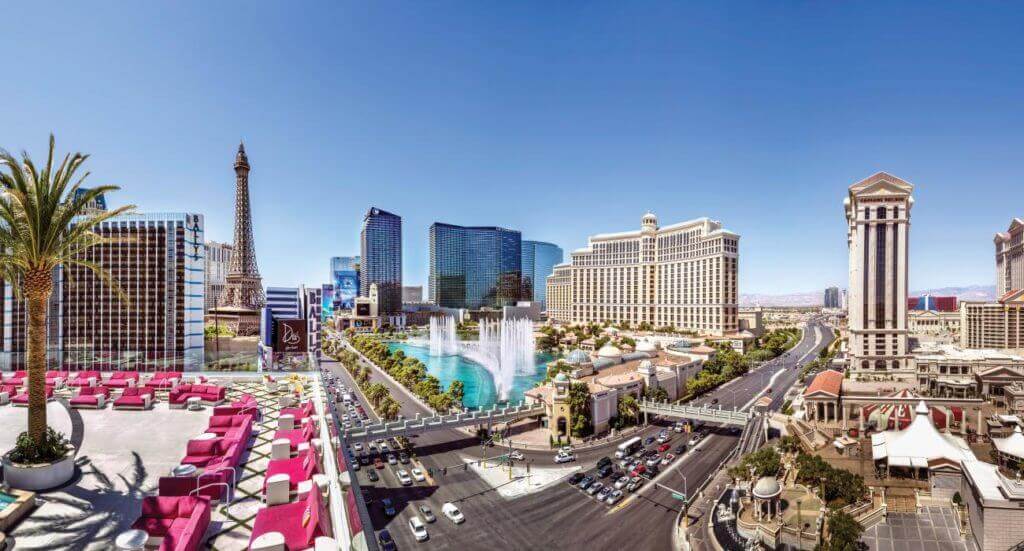
Casinos were once a place that comped shows, rooms, food and drinks to entice people to gamble, which is how they made most of their revenue.
NB: This is an article from Oracle
Casino marketers created mailings to invite gamers – hopefully ‘whales” to play in their casinos. The theory? Money won from gamblers would offset comps, driving billions in profits for gaming giants.
But much has changed in the gaming landscape. In 1995, there were 2,575 gaming licenses in Nevada with 5,400 games, 567 tables 182,000 slots. The peak came in 2007 with 2,987 licenses, 6,137 games and 1,006 tables. Since then, the great depression put a hurt on Vegas, especially casinos that were overleveraged and dependent on gaming to pay debts. By 2018, licenses dropped to 2,931 – the same level in 2005.
The Mirage Las Vegas changed everything. The first “integrated resort casino” opened in 1989 and offered everything under one roof. To offset costs, it had to take in a million a day to be profitable, which it did with high-end restaurants, rooms and entertainment.
It triggered a building surge of casino concepts, each larger and more expensive than the previous one. Several types of Vegas experiences emerged, including: the pool – spa visit, the convention expo visitor; and the foodie experience with top chefs. The gambler went elsewhere. The following statistics underscore the shift:
- By 2012, more than 35% of revenues came from non-gaming sources
- In the same period, gaming revenue dropped to 45% of earnings – compared with a high of 60% in 1994.
- Revenue breakdown since 2004: 36% gaming, 64% rooms and 14.8% food (the highest level of food was 2015 – 18.4%). In Macau, the numbers are reversed; gambling remains higher than restaurants.
- Vegas with roughly 150,000 rooms and occupancies fluctuating from a high of 94% in 2007 to 88% in 2018. ADR was ~ $124 in 2018. to $142.33 in Q1 2019.
With casinos going through the biggest changes since the 2007 downturn, they’ve had to find ways to generate new revenue opportunities. Casinos are tacking resort fees on top of the already high room rates, adding $30 to $40 per night. Free parking has been replaced by fees that can run as much as $20 per night. Free buffets have given way to expensive restaurants. Add in entertainment, spa treatments and the clubs. The revenue from these venues are as much as what casinos generated.
Now, casinos are focused on stadiums and arenas. With the success of the T-Mobile Arena at MGM Park, companies want a piece of this business. Sports have become the latest non-gaming trend of the Vegas market; the Golden Knights hockey team plays to a packed house for every home game. Today the cranes on the city’s skyline aren’t building mega-resorts; they are building stadiums.
Which raises the question: From a technology standpoint, how are all these touchpoints managed? It’s challenging for these gaming giants to implement systems to oversee the guest experience, record hundreds of revenue centers and maintain a frictionless process through complicated integrations.
Not taking anything away from back-office systems such as ERP, HCM, inventory/purchasing and business systems, the front-of-the-house technology systems are most commonly known and used. Casinos are still the heartbeat of the Vegas experience, and gaming systems help manage everything from player profiles, loyalty, slot operations and the closest thing to AI in our industry – the theoretical win analysis of every player based on average bet. Marketing uses such information to determine the type of comp that should be rewarded to a customer who will return at a particular game. These systems need to be integrated into all the non-gaming solutions throughout the company to track each guest – from booking to departure and through spending, including point-of-sale transactions in restaurants, spa, retail and entertainment. This ensures everything is tracked, from bottle service in a night club to concert tickets. Vegas casinos will track and add on taxes, fees and services charges. This is how casinos are driving more revenue from non-gaming activities.
The battle for guest spend isn’t just in the casino. Convention visitor business has grown steadily in Vegas, too, prompting an investment in the expansion of the LV Convention Center. According to LVCVA, 3.5 million visitors came to Las Vegas in August, of which 658,000 were convention related.




